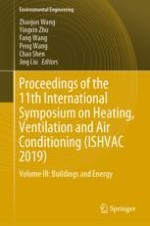2020 | OriginalPaper | Chapter
Towards Zero Emission Residential Buildings (ZEBs) in a Humid Subtropical Climate. Analysis Emissions from Energy Use and Embodied Emissions from Materials in Referential Locations According to Obligatory Residential Energy Codes and Using Generic LCA Data Sources
Authors : Daniel Satola, Aoife Houlihan Wiberg, Arild Gustavsen
Published in: Proceedings of the 11th International Symposium on Heating, Ventilation and Air Conditioning (ISHVAC 2019)
Publisher: Springer Singapore
Activate our intelligent search to find suitable subject content or patents.
Select sections of text to find matching patents with Artificial Intelligence. powered by
Select sections of text to find additional relevant content using AI-assisted search. powered by
